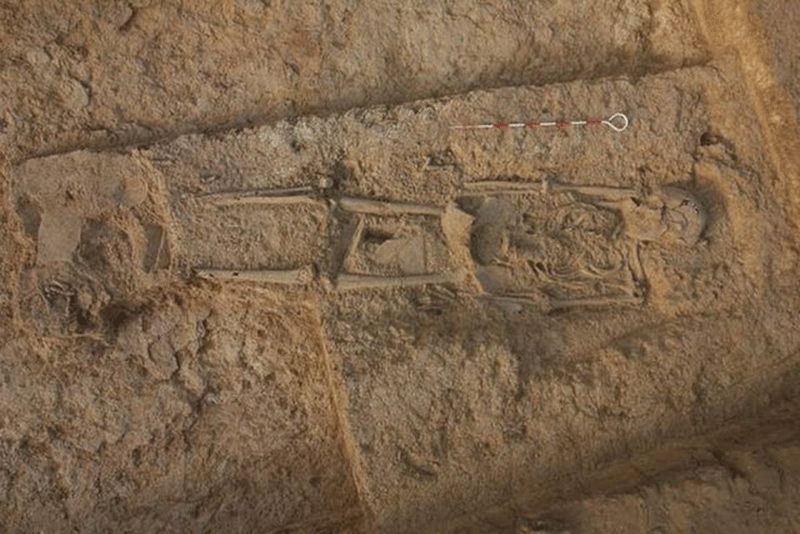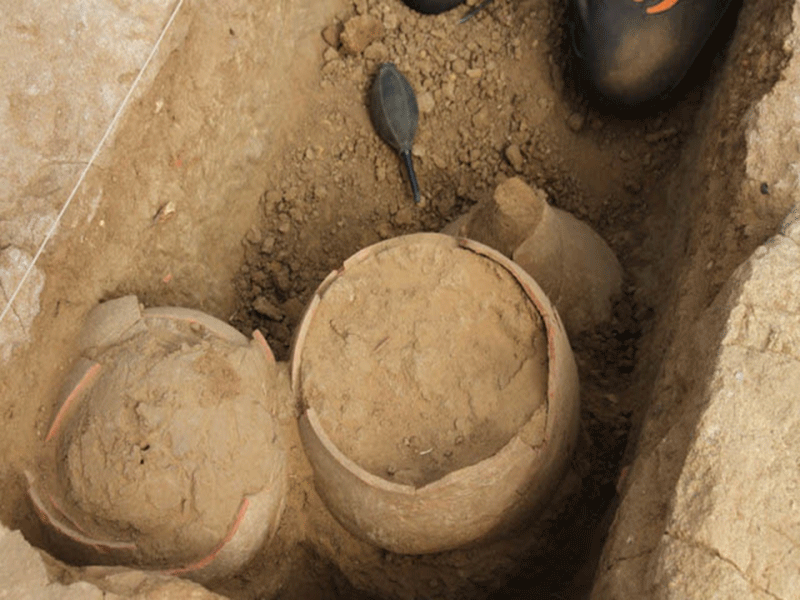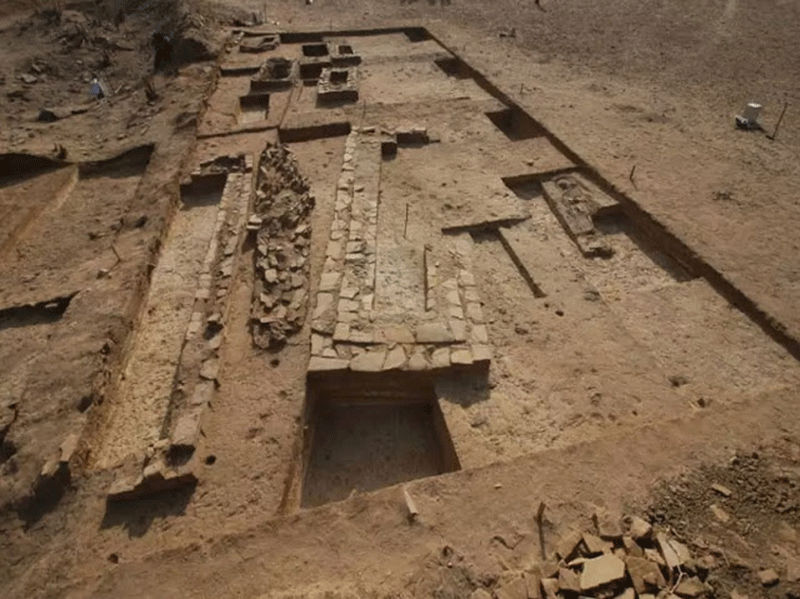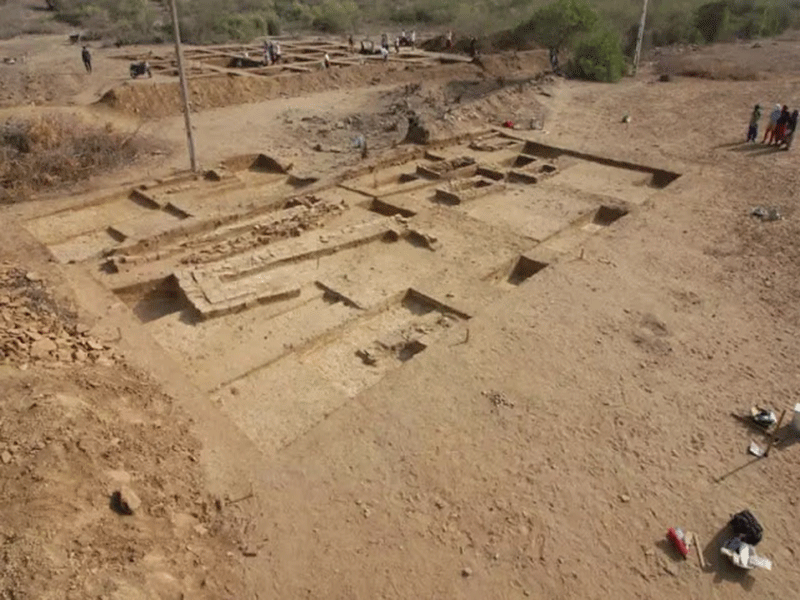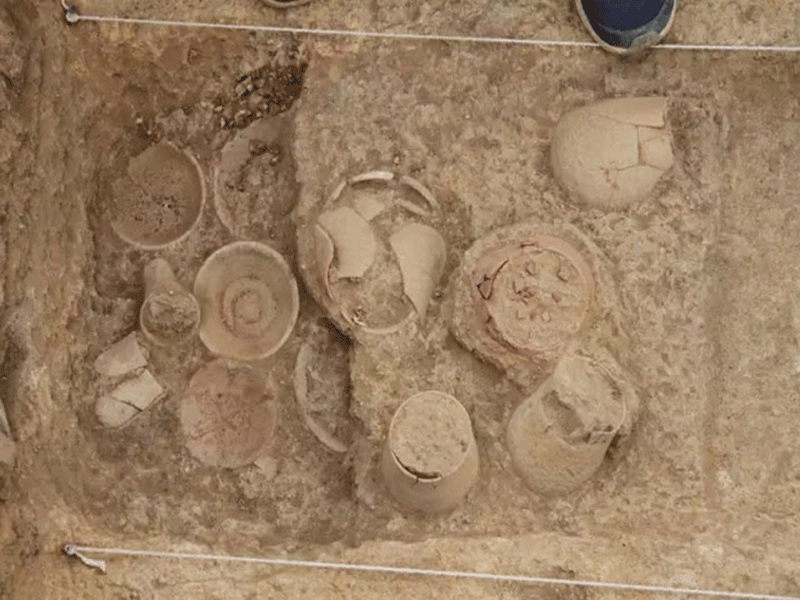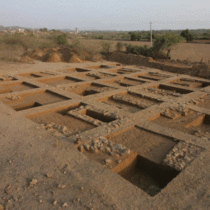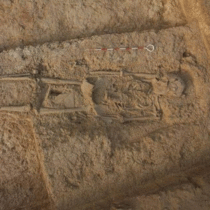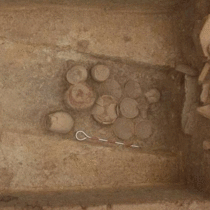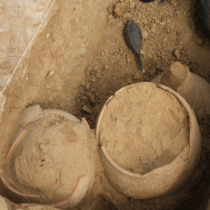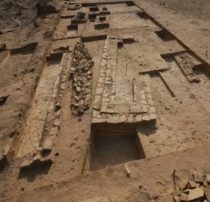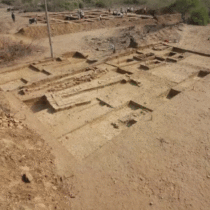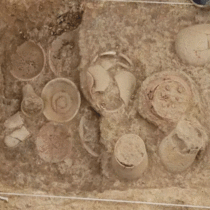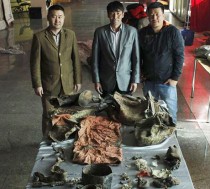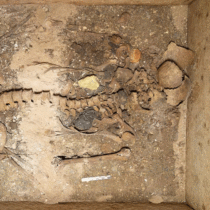Excavations by a team of archaeology students in India have shed light on burial customs of the early Harappan phase. The excavations were carried out in Kutch and have yielded evidence of what seems to have been a cemetery.
The group, comprising 47 members, were students from the University of Kerala. The works were led by Rajesh S.V., assistant professor at the Department of Archaeology, along with assistant professor Abhayan G.S. The students camped in Khatiya village and excavated skeletal remains and 26 graves. The graves are in various dimensions and rectangular in size. The largest one was 6.9 m long and the smallest 1.2 m long, and they were made with the use of stones. They seem to date to the early phase of the Harappan civilisation (3300bce-2600BCE).
The skeletons found in the graves were disintegrated and arranged in a specific manner, with an east-west orientation and the heads placed on the eastern side. On the western side, where their legs were, earthen pots and pottery shard as well as other artefacts were found, such as conch-shell bangles, stone and terracota beads, lithic tools and grinding stones. Also, in a few graves researchers found animal skeletons along with those of humans.
Researchers also found evidence of primary and secondary burials in some graves, as well as the remains of individuals who were possibly cremated. A complete human skeleton was also discovered. It will be taken along with the artefacts to the museum of the Kerala University’s Archaeology Department for conservation and display. The rest of the skeletons, which were only retrieved in parts, will be sent for further testing to determine the age and gender of the individuals as well as their cause of death.
The pots found at the site were similar in various ways to those unearthed in other Harappan sites, according to researchers.

